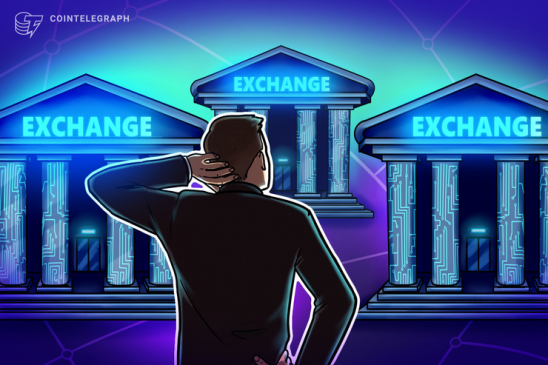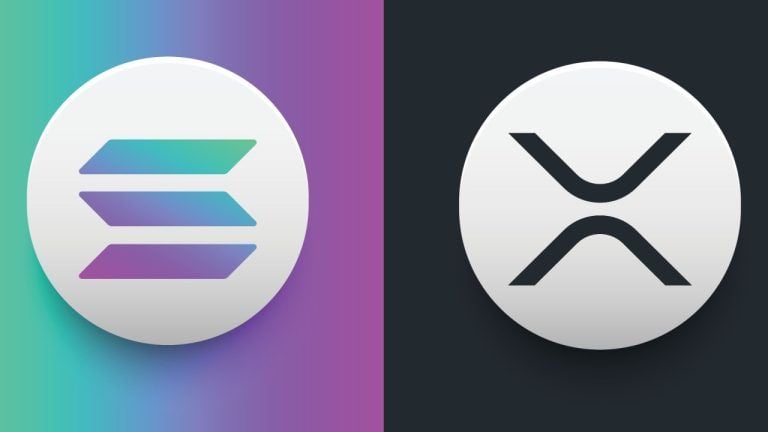Choosing the right cryptocurrency exchange may be one of the most important initial tasks an interested trader or investor must complete. Picking the wrong platform could potentially lead down a road riddled with hacks, distractions and wasted effort.
When looking for the right exchange, interested parties must first know what they are looking to accomplish. For example, is the goal to simply invest on a longer term basis, or to trade in and out of positions regularly?
Investors might look to spot exchanges. These are platforms on which one can buy and sell actual digital assets themselves. Spot Bitcoin (BTC), for example, is actual Bitcoin that a person can buy, sell or transfer to any exchange or wallet at will and hold for as long as desirable.
Traders, on the other hand, might find interest in derivatives — trading products such as futures and options that are based on the price action of underlying spot assets.
These products trade contracts based on the price action of underlying assets, and can be settled into cash or digital assets, depending on the exchange. These contracts, however, are local to the exchanges hosting them, meaning they cannot be transferred to other locations.
After the trader has determined his or her objectives, it can be crucial to look into aspects such as country regulations, exchange security and a host of other aspects.
Below is a list of 10 important areas to look into when choosing an exchange.
1. KYC/AML
Different exchanges comply with different laws and regulations, based on their locations, practices and offerings. Some exchanges have Know Your Customer (KYC) and Anti-Money Laundering (AML) practices, requiring participants to submit personal information about themselves during account creation.
These practices and requirements vary from exchange to exchange. Some platforms require KYC and AML to withdraw funds or lift certain limitations, obligating customers to provide copies of photo identification and sometimes a proof or residence. Other platforms require such customer verification during the process of account creation.
Many crypto exchanges nowadays also ban customers residing in certain countries.
2. Reputation
Since the cryptocurrency space is still largely a new industry, it is important to be aware of the reputation of each exchange of interest. Many exchanges have been involved in nefarious activities, hacks and exit scams, leaving users in a less than ideal situation.
It is important to conduct research on different exchanges, searching them on Google alongside the term “scam” and evaluating the results. Searching the exchange on various forms of social media can also be useful, looking to see if any complaints have been posted.
Looking into each platform’s terms and conditions can also be helpful, noting anything that is alarming or out of place.
3. Security
Each exchange has its own chosen methods of security. Check to see if the exchange offers two-factor authentication (2FA). If not, then the exchange may not be acceptable by security today’s standards.
Additionally, look to see what type of 2FA is compatible. Google authenticator, Authy and Yubikey are three common avenues for 2FA as they arguably offer better security than mobile text-based 2FA.
Each exchange also has various other security measures possibly worth checking into, such as cold storage asset reserves and custodial storage services.
4. Insurance fund
Users can also note whether or not their exchange of interest has an insurance fund. Certain exchanges have funds in place to compensate customers under specific circumstances.
Other exchanges are covered under the Federal Deposit Insurance Corporation (FDIC), which can protect a specified amount of U.S. users’ funds.
5. Fiat exchange
Traders and investors at some point in their careers likely will require a fiat compatible exchange, allowing them to transfer national currencies (USD, CAD, etc.) into the crypto world for trading use, and out of the crypto world to cash out profits.
Some exchanges have different fiat options, compatible with specific banks, and some do not. Checking to see which banks exchanges work with, as well as what types of fiat currencies are tradable, may be necessary.
6. Leverage trading
Derivatives exchanges frequently offer leverage trading. Leverage essentially allows traders to borrow a certain amount of funds for trades, based on the amount of funds they hold on the exchange.
Leverage may be important for traders looking to enter short-term positions with larger size. Multiple exchanges offer anywhere from 1x to 100x leverage, although different platforms may have varying rules regarding liquidation levels and margin calls.
7. Volume
Trading platforms vary based on the number of participants using them at any given time, as well as the amount of each asset being traded. This aspect can be important as it affects how easily users can enter or exit positions.
If a trader is looking to sell 100 BTC, he or she likely will not be able to do so on a low-volume exchange as not enough sellers may exist at the current listed market price, forcing the trader to sell to lower offers on the exchange.
Volume issues often complicate altcoin positions on certain exchanges, making it difficult to buy or sell large amounts of those assets.
Checking volume can be a difficult task sometimes, due to exchanges posting fake volume. One method involves looking at the order book on different exchanges, taking note of what amounts of each asset sit in the order book and how far the price levels are from one another.
Another way to assess volume is to check third-party websites that offer this type of data. Coin360, CoinMarketCap and OnChainFX are three options that list different types of volume data.
8. Prices
Asset prices also vary across multiple exchanges. Crypto assets might trade higher or lower on one exchange versus another due to participant location (China-based exchanges can sometimes pump more), volume and other factors. Noting these discrepancies can factor into choosing an exchange, especially when altcoins are concerned.
Price discrepancy can also be a red flag that a given exchange may suffer from low liquidity/volume.
9. Asset selection
Top digital assets such as Bitcoin, Ethereum (ETH) and Litecoin (LTC) are widely available on most crypto exchanges. Other smaller cap coins and tokens, however, may not be available on certain exchanges.
Therefore, it can be important to know which crypto assets each exchange offers, selecting the appropriate options.
10. Fees
Most exchanges charge a small fee for each trade. These fees vary based on the platform, and are usually based on a percentage of each trade.
Fees may not be as important to investors as they are to traders. Traders buy and sell more frequently, racking up fees more often, although this depends on the size of each trade versus investment sizing.
Some exchanges also have withdrawal fees and limits.
DYOR
Doing your own research (DYOR) is one of the most important aspects of engagement in the crypto space — not just regarding exchanges, but the entire industry as a whole.
The above 10 aspects can be good examples of things to consider and research when choosing a crypto exchange, although they will vary from person to person based on their goals, values and activities. Skepticism and research may prove more valuable than not in the young and developing crypto industry.
The views and opinions expressed here are solely those of (@benjaminpirus) and do not necessarily reflect the views of Cointelegraph. Every investment and trading move involves risk. You should conduct your own research when making a decision.




